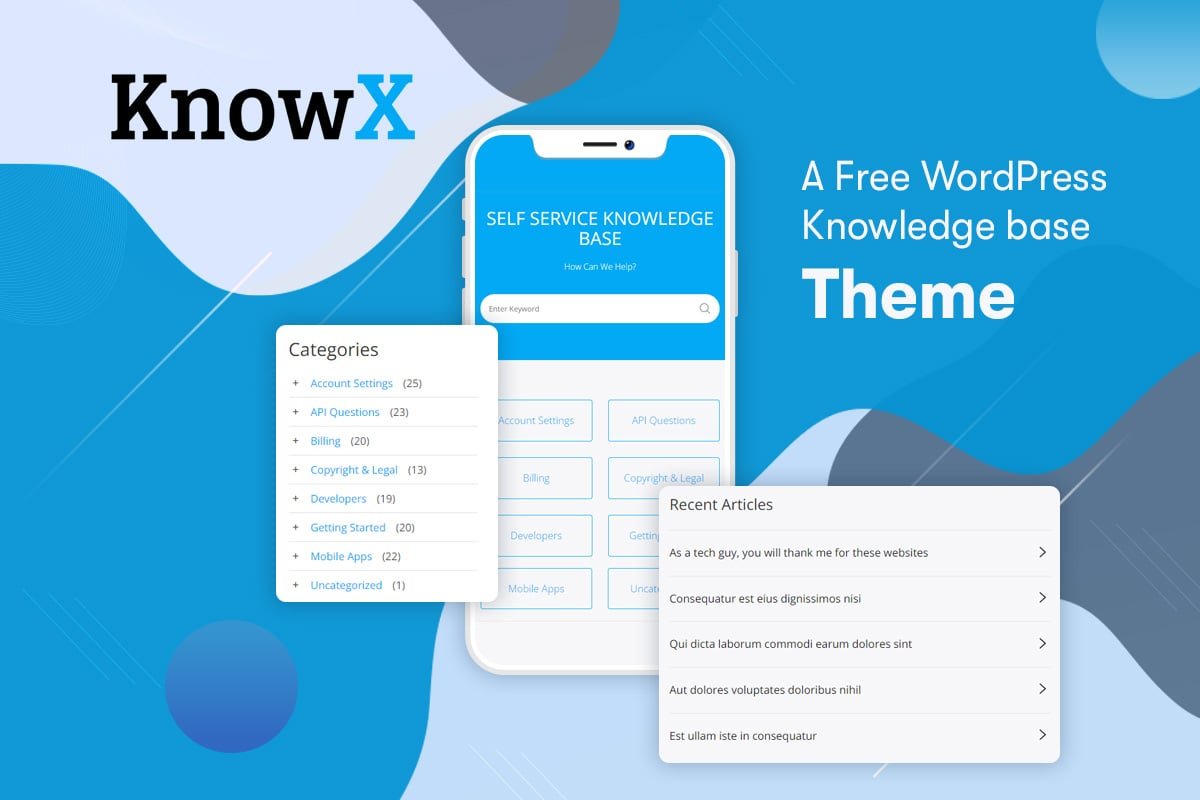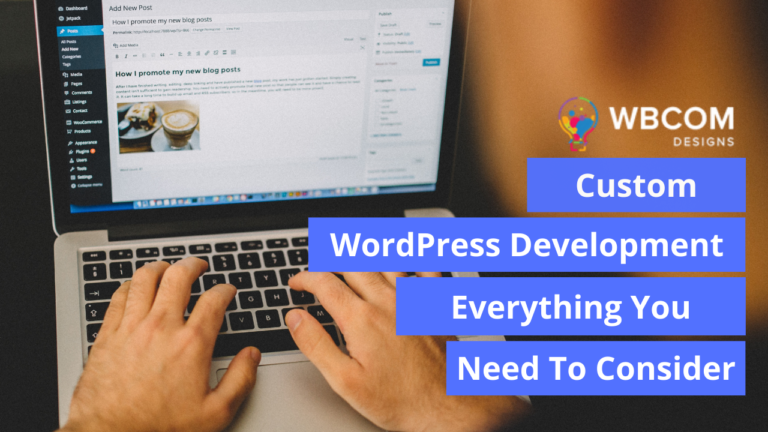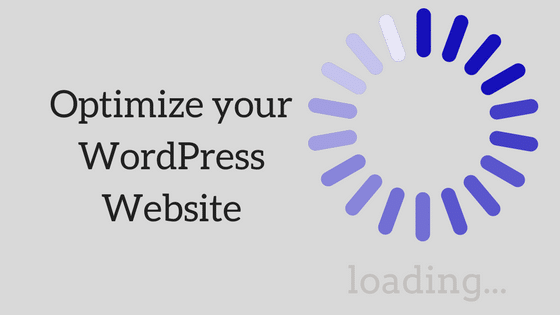WordPress is undoubtedly one of the most popular content management systems (CMS) globally, powering nearly 43% of all websites on the internet. One of the significant reasons for its widespread use is the ability to customize and create stunning websites through the use of WordPress themes.
In simple terms, a WordPress theme is a collection of files that determine how your website looks and operates. It affects the overall design, layout, and functionality of your site, providing a consistent and visually appealing experience for your visitors.
Finding the perfect WordPress theme for your website may seem like a daunting task due to the sheer number of options available. However, with a few quick tips, you can streamline the process and ensure you make the right choice.
Firstly, you need to determine the purpose of your website. Are you creating a blog, an eCommerce store, or a corporate website? Different themes cater to different needs, so identifying your website’s purpose will help you narrow down the options.
Next, consider the design elements that are crucial for your website. Do you want a minimalist, clean look or a bold and vibrant one? Are you looking for a theme that supports multimedia content, such as videos and image galleries? It’s essential to align the design elements with your brand image and the message you want to convey to your audience.
Another vital aspect to consider is responsiveness. In today’s mobile-driven world, having a mobile-friendly website is non-negotiable. Ensure that the theme you choose is responsive, meaning it adapts and looks great on different devices and screen sizes.
The theme’s compatibility with plugins is also crucial. WordPress has an extensive library of plugins that can enhance your website’s functionality, such as SEO optimization, contact forms, social media integration, and more. Make sure that the theme you select is compatible with the plugins you intend to use, or you may face compatibility issues down the line.
To find a suitable WordPress theme, you can read our blog which offers affordable themes. These themes undergo a quality check by the WordPress team, ensuring security and reliable performance. If you’re looking for more premium options, several reputable theme marketplaces offer a wide range of paid themes with additional features and support such as ours.
When evaluating potential themes, check the ratings and reviews left by other users. These reviews can provide valuable insights into the theme’s quality, support offered by the theme developer, and any potential issues you may encounter.
Once you have found the perfect WordPress theme, installing and activating it is a breeze. Simply navigate to your WordPress dashboard, go to the “Appearance” tab, and click on “Themes.” From there, you can upload the theme file and activate it with a single click.
WordPress theme is the backbone of your website’s design and functionality. By considering your website’s purpose, design elements, responsiveness, plugin compatibility, and user reviews, you can find a WordPress theme that perfectly suits your needs. With the right theme in place, you can create a visually stunning and user-friendly website that leaves a lasting impression on your visitors.
Table of Contents
ToggleWhat can wordpress themes do?
WordPress themes play a crucial role in shaping the design and functionality of your website. Here are some key things that WordPress themes can do:
Define the Look and Feel:
Themes determine the overall visual design of your website.
They control the layout, color scheme, typography, and other stylistic elements.
Layout Structure:
Themes provide the structure for your website’s layout, including the placement of headers, footers, sidebars, and content areas.
Customization Options:
Many themes offer customization options through the WordPress Customizer.
Users can tweak settings like colors, fonts, and background images without needing coding skills.
Responsiveness:
Themes can be designed to be responsive, ensuring your website looks good and functions well on various devices, from desktops to smartphones.
Widgets and Sidebars:
Themes often define widgetized areas where users can add various elements like recent posts, categories, or custom widgets.
Menu Placement:
Themes control the placement and style of your navigation menus, allowing you to create organized and user-friendly navigation.
Post Formats and Types:
Themes can support different post formats (standard, gallery, video, etc.) and custom post types, allowing for diverse content presentation.
Integration with Plugins:
Well-designed themes seamlessly integrate with popular plugins, enhancing your website’s functionality.
Page Templates:
Themes may include different page templates (e.g., full-width, archives, and landing pages) for diverse content needs.
SEO Features:
Some themes are built with SEO best practices in mind, helping your site perform well in search engine rankings.
E-commerce Integration:
E-commerce themes are tailored for online stores, integrating with plugins like WooCommerce to facilitate product displays, shopping carts, and secure transactions.
Typography Options:
Themes often provide options for customizing the typography of your website, allowing you to choose fonts and font sizes.
Social Media Integration:
Many themes include social media features, making it easy to connect your website with various social platforms.
Security Features:
Well-coded themes contribute to the overall security of your website, preventing vulnerabilities that could be exploited by malicious actors.
Translation and Multilingual Support:
Themes may support translation and multilingual plugins, enabling you to create a website in multiple languages.
Header and Footer Customization:
Themes allow you to customize the header and footer sections of your website, including logos, menus, and contact information.
It’s important to choose a theme that aligns with your website’s goals and requirements. Additionally, regularly updating your theme ensures compatibility with the latest WordPress version and security patches.
Also Read: Best Christmas And New Year Deals On WordPress Themes, Plugins, And Extensions (2023)
WordPress Theme types:
1. Responsive Themes: Adapting to Every Screen Size
In the era of smartphones and tablets, a responsive website is non-negotiable. Responsive WordPress themes ensure optimal viewing across various devices, enhancing user experience and search engine rankings. With Google’s emphasis on mobile-friendly websites, opting for a responsive theme is a strategic move to reach a broader audience.
2. E-commerce Themes: Powering Your Online Store
For entrepreneurs venturing into the world of online commerce, the right theme can make all the difference. E-commerce themes are tailored to showcase products effectively, streamline the purchasing process, and instill trust in potential customers. From sleek product galleries to secure checkout processes, these themes are designed to boost both aesthetics and functionality.
3. Blog Themes: Crafting Engaging Narratives
Blogging remains a powerful tool for content creators and businesses alike. Blog themes prioritize readability, visual appeal, and easy navigation. Whether you’re a seasoned blogger or just starting, choosing a theme that complements your content and engages your audience is pivotal for sustained success.
4. Magazine Themes: Organized Content Display
For content-heavy websites aiming for a magazine-style layout, magazine themes offer a structured and visually appealing solution. These themes often include customizable layouts, featured content sections, and integrated advertising spaces. Creating a professional and organized look enhances user engagement and encourages return visits.
5. Portfolio Themes: Showcasing Your Best Work
Artists, photographers, and freelancers often rely on portfolio themes to display their work in an aesthetically pleasing manner. These themes prioritize visual impact, allowing creators to showcase their portfolio with elegance. With customizable galleries and attention to detail, portfolio themes turn a website into a captivating visual journey.
6. One-Page Themes: Simplicity in Design
Sometimes, less is more. One-page themes offer a minimalist approach, condensing all essential information into a single, scrolling page. Ideal for small businesses or personal websites, these themes convey a straightforward message without overwhelming visitors with excessive pages and navigation.
7. Customizable Themes: Tailoring Your Unique Identity
Flexibility is key, and customizable themes provide the creative freedom needed to craft a truly unique website. These themes often come with drag-and-drop builders, color schemes, and font options, allowing users to customize every aspect without delving into complex coding.
8. Free vs. Premium Themes: Weighing the Options
The eternal debate between free and premium themes is a crucial decision for many website owners. While free themes are budget-friendly, premium themes often come with additional features, dedicated support, and regular updates. We’ll explore the pros and cons of both to help you make an informed decision based on your specific needs.
9. SEO-Optimized Themes: Enhancing Visibility
In the competitive digital landscape, search engine optimization (SEO) is paramount. SEO-optimized themes prioritize clean code, fast loading times, and mobile responsiveness, directly influencing your website’s search engine rankings. We’ll delve into the key features that make a theme SEO-friendly and its impact on organic visibility.
WordPress Themes: Overview and Tips on Finding the Perfect One
When it comes to building a website on WordPress, one of the most important decisions you’ll have to make is choosing the right theme. WordPress themes play a crucial role in the overall design and functionality of your website. They determine how your content is laid out, the color scheme, typography, and even the functionality of your site.
With thousands of WordPress themes available in the market, finding the perfect one may seem like a daunting task. However, with a little guidance and understanding of your needs, you can simplify the process.
Firstly, it’s important to understand that there are two types of WordPress themes: free and premium. Free themes are a good starting point for beginners or those with a tight budget. They are readily available in the WordPress theme directory and can be easily installed. However, the downside is that they may not offer as many customization options or support as premium themes.
Premium themes, on the other hand, are often more feature-rich and offer a wider range of customization options. They come at a cost but offer better support, regular updates, and access to additional features. Depending on your requirements and budget, you may want to consider investing in a premium theme to give your website a more professional look and feel.
When choosing a theme, it’s crucial to keep your website’s purpose and target audience in mind. Consider the industry or niche you are operating in, as well as the type of content you’ll be showcasing. If you’re running an e-commerce store, for example, you’ll need a theme that is optimized for online selling with features such as shopping cart integration, product display options, and secure payment gateways.
Furthermore, it’s essential to choose a responsive theme that adapts to different screen sizes and devices. With the majority of users browsing websites on their mobile phones, having a mobile-friendly design is crucial for a positive user experience and improved search engine rankings.
Another factor to consider is the theme’s loading speed. A slow-loading website can deter visitors and have a negative impact on your search engine optimization (SEO). Look for themes that are optimized for performance and make use of clean code and caching techniques to ensure fast loading times.
Customizability is another important aspect to evaluate. You’ll want a theme that allows you to customize the layout, color scheme, fonts, and other visual elements to match your brand or personal preferences. Look for themes with user-friendly customization options such as drag-and-drop builders or theme customizers to make the customization process easier.
Finally, take the time to read reviews and ratings of the themes you are considering. User reviews can provide valuable insights into the experiences and satisfaction levels of previous users. Look for themes that have positive reviews, good ratings, and a reputable development team behind them.
Selecting the perfect WordPress theme requires careful consideration of your website’s needs, budget, and target audience. Take advantage of the vast selection of themes available and look for the one that aligns with your business objectives, offers good customization options, and provides a seamless user experience. Remember, the right theme will not only enhance the aesthetics of your website but also contribute to its functionality, usability, and success.
Also Read: Reign Theme – Customizer Setting & Branding Options
What Are WordPress Themes and Why Do They Make Design Easier?
WordPress themes are pre-designed templates that can be installed on a WordPress website to instantly enhance its appearance and functionality. They serve as a roadmap for the design of a website, and they make the process of creating and modifying webpages significantly easier for users.
When it comes to designing a website, not everyone possesses the coding abilities or the artistic skills required to create a visually pleasing and functional layout from scratch. This is where WordPress themes come to the rescue. With a wide range of themes available, users have the flexibility to choose from various designs, layouts, color schemes, and features that suit their unique needs.
One of the primary reasons why WordPress themes make design easier is that they eliminate the need for coding knowledge. Traditionally, creating a website from scratch would involve writing complex HTML, CSS, and PHP code. However, WordPress themes simplify the process by providing a ready-made framework that users can easily customize to their liking. This means that even individuals with no coding experience can create dynamic and visually appealing websites with just a few clicks.
Furthermore, WordPress themes are designed with functionality in mind. They offer a range of features and customizations, such as customizable headers, footers, and sidebars, built-in page builders, and advanced widgets. These features allow users to effortlessly create stunning and interactive websites that engage their audience.
The versatility of WordPress themes also plays a significant role in making design easier. Whether you’re creating a blog, an e-commerce site, an online portfolio, or a corporate website, there is a theme available for every niche. Users can select a theme that aligns perfectly with their website’s purpose, ensuring that the design is both visually appealing and functional.
In addition to design, WordPress themes also contribute to the overall user experience. Themes are responsive, meaning they adapt and adjust according to the device on which they are viewed. This ensures that websites look and function seamlessly on desktops, laptops, tablets, and mobile devices. By creating a responsive design, users can provide a positive user experience and cater to the growing number of mobile users.
WordPress themes are a game-changer when it comes to website design. With their wide range of design options, customization features, and user-friendly interface, they make the process of creating visually stunning and functional websites accessible to everyone. Whether you’re a seasoned web designer or a beginner, WordPress themes simplify the design process, eliminate the need for coding knowledge, and contribute to an exceptional user experience.
Also Read: 20+ Best WordPress Block Themes For Full Site Editing In 2023
Find the perfect theme for your website.
Finding the perfect theme for your website can be a daunting task, especially with the plethora of options available in today’s digital landscape. However, choosing the right theme is crucial as it sets the tone for your website and plays a significant role in attracting and engaging visitors. Whether you’re a blogger, an online store owner, or a small business owner, selecting a theme that aligns with the goals and purpose of your website is essential.
Firstly, consider the nature of your website and what you aim to achieve with it. Are you trying to showcase your creative portfolio? Or perhaps you want to sell products through an online store? Understanding the primary focus of your website will help you determine the type of theme that suits your needs. For example, if you’re a photographer, you might want a theme that allows you to display your images prominently and has a clean and modern design to reflect your artistic style.
Next, think about the functionality and features that are important for your website. Consider whether you need e-commerce capabilities, a blog section, multiple page layouts, or specific customization options. Many theme providers offer a wide range of features, so it’s crucial to find one that provides the tools you require without compromising on performance and user experience.
Additionally, take into account the responsiveness of the theme. With the increasing popularity of mobile devices, having a responsive website is more critical than ever. A responsive theme ensures that your website adapts seamlessly to different screen sizes and resolutions, providing a consistent and user-friendly experience across all devices. This is particularly important as search engines like Google prioritize mobile-friendly websites in their search results.
Another factor to consider is the visual appeal of the theme. Your website’s design should be visually appealing and engaging to capture the attention of your visitors. Look for themes that offer customization options such as color schemes, typography choices, and layout flexibility, allowing you to create a unique and visually stunning website that represents your brand identity.
Furthermore, consider the support and documentation provided by the theme provider. Reliable support ensures that any technical issues or concerns you may face will be addressed promptly, while comprehensive documentation guides you through the theme installation and customization process. Evaluating a theme provider’s reputation and customer reviews can help you determine whether they offer good support and quality documentation.
Lastly, don’t forget to consider your budget. While there are many free themes available, investing in a premium theme can provide you with additional benefits such as regular theme updates, enhanced security features, and dedicated support. Assess the value and long-term benefits a premium theme can offer, and weigh it against your budget to make an informed decision.
Finding the perfect theme for your website requires careful consideration of your website’s purpose, functionality, responsiveness, visual appeal, support, and budget. By taking the time to evaluate these factors, you’ll be able to find a theme that not only suits your needs but also helps your website stand out in the competitive online landscape. Remember, a well-chosen theme sets the foundation for a successful website that captivates and retains visitors.
Also Read: Reign Theme For BBpress: Best WordPress Forum Theme
Conclusion:
WordPress, powering 43% of websites globally, owes its popularity to customizable themes that shape website design and functionality. To find an ideal theme among the vast options, consider your website’s purpose, design preferences, responsiveness, plugin compatibility, and user reviews. Themes play a pivotal role in defining the website’s look, layout, and functionality, impacting user experience.
Themes, collections of files determining website appearance, are essential for visual design, layout, and functionality. Identifying your website’s purpose and design elements, ensuring responsiveness, and checking plugin compatibility are crucial steps in theme selection. Reviews and ratings offer insights into a theme’s quality and support.
WordPress themes are diverse, serving various purposes, such as responsive themes for optimal viewing on different devices, e-commerce themes for online stores, blog themes for engaging narratives, and customizable themes for creative freedom. The choice between free and premium themes involves considering customization options, support, and additional features.
Themes simplify website design, eliminating the need for coding knowledge. They contribute to user experience through responsiveness and offer customization options. Choosing the right theme aligns with your website’s goals, ensuring a visually appealing and functional result. The process involves understanding your website’s nature, required features, responsiveness, visual appeal, and support.
In conclusion, the article emphasizes the importance of selecting an appropriate WordPress theme based on your website’s goals and requirements. It highlights the role of themes in shaping design, functionality, and user experience, providing guidance on the selection process and the diverse options available.
Interesting Reads: Reign Theme – Demo Setup Create Social Community Website in Minutes








